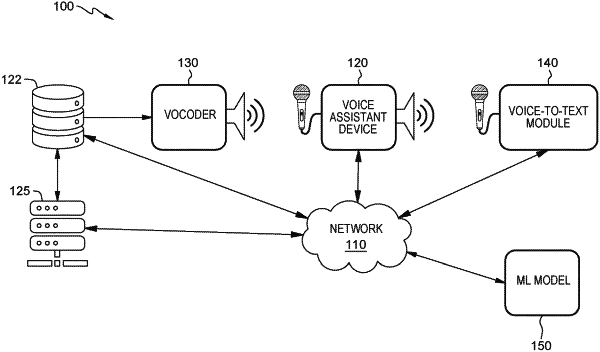| CPC G10L 15/01 (2013.01) [G10L 15/22 (2013.01); G10L 15/30 (2013.01); G10L 21/003 (2013.01)] | 14 Claims |

|
1. A computer-implemented method for testing a voice assistant device, the computer-implemented method comprising:
receiving, by one or more processors, test data from a database, the test data comprising a first set of coding parameters and a first user utterance having an expected device response, wherein the first set of coding parameters comprises one or more trigger words and one or more associated device responses;
generating, by the one or more processors, a first modified user utterance by applying the first set of coding parameters to the first user utterance, wherein the first modified user utterance is acoustically different than the first user utterance;
audibly presenting, by the one or more processors, the first modified user utterance to the voice assistant device;
receiving, by the one or more processors, a first voice assistant response from the voice assistant device;
determining, by the one or more processors, that the first voice assistant response is substantially similar to the expected device response;
responsive to determining the first voice assistant response is not substantially similar to the expected device response, identifying, by the one or more processors, a first edge case based at least on the first set of coding parameters and the first modified user utterance; and
determining, by the one or more processors, a second set of coding parameters based on at least one of the first set of coding parameters, the first modified user utterance, and the first edge case.
|